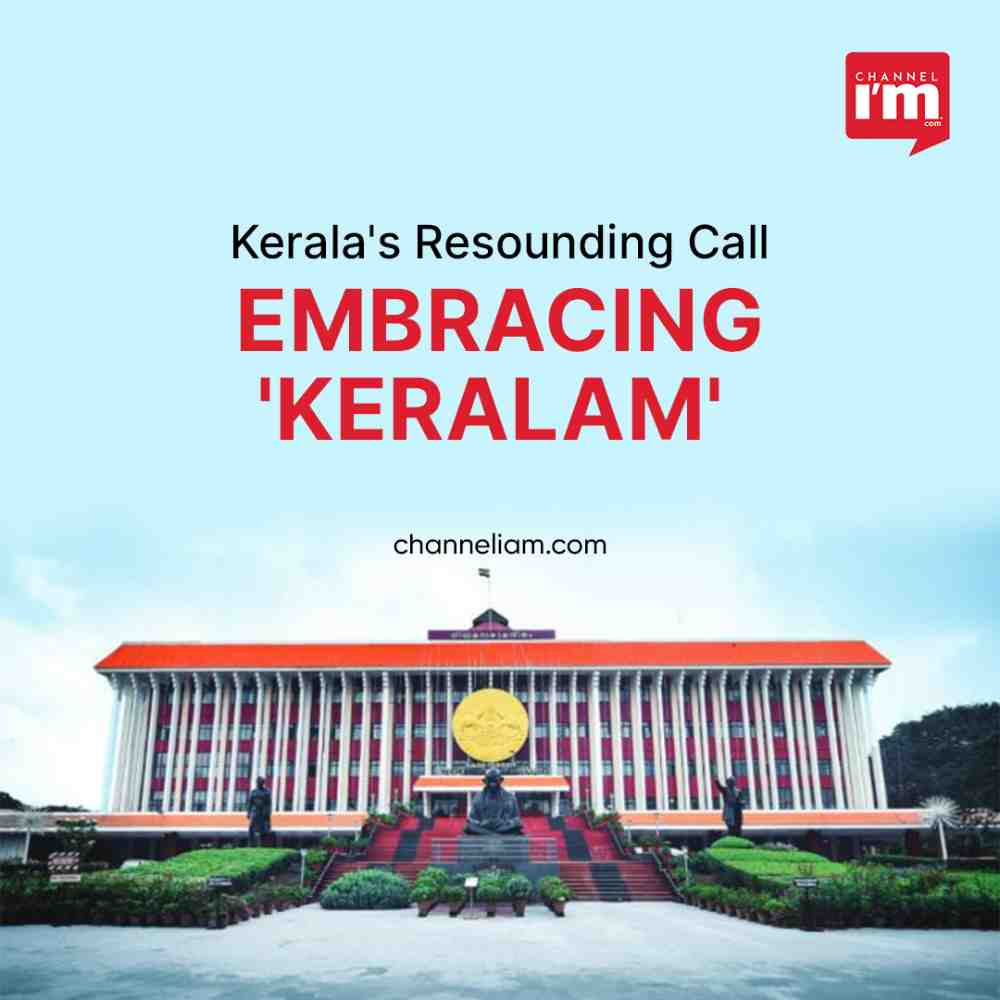
Embracing Identity: Kerala’s Push for a Name Change
In a significant move, the Kerala Assembly recently came together to pass a unanimous resolution urging the Central government to officially rename the state as “Keralam,” not just in the Constitution but also across all official records. The resolution was proposed by Chief Minister Pinarayi Vijayan and was received without any amendments suggested by the Congress-led Opposition. This decision carries profound historical and cultural implications for the state, reflecting the long-standing desire to align its name more closely with its linguistic and cultural roots.
Unveiling the Resolution: The Call for Identity Alignment
The resolution emphasized that the state’s name in Malayalam is “Keralam,” and that states were originally formed based on language on November 1, 1956 – a day that is now observed as Kerala Formation Day. The plea to unify all Malayalam-speaking communities into a single entity has been echoing since the days of the freedom struggle. However, the name inscribed in the first Schedule of the Constitution has been “Kerala.” The Assembly, in a unified voice, is urging the Union Government to invoke Article 3 of the Constitution to expedite the renaming process.
Tracing Historical Origins: ‘Kerala’ and ‘Keralam’
The origin of the names “Kerala” and “Keralam” is steeped in history and conjecture. The earliest mention of Kerala can be found in Emperor Asoka’s Rock Edict II dating back to 257 BC, where the local ruler is referred to as “Keralaputra” (son of Kerala) and “son of Chera,” alluding to the Chera dynasty. “Keralam,” on the other hand, is believed by scholars to have evolved from “Cheram.” Dr. Herman Gundert, a German scholar renowned for publishing the first Malayalam-English dictionary, pointed out that “keram” is the Kannada equivalent of “cheram,” and he equated “Keralam” to “Cheram,” representing the region between Gokarnam and Kanyakumari. This etymology traces back to the root “cher,” meaning to join, clearly reflected in “Cheralam,” where “alam” signifies region or land.
Demand for Unity: The Road to Modern Kerala State
The Kerala region, inhabited by Malayalam speakers, had historically been under the rule of various kings and princely states. The 1920s saw the emergence of the Aikya Kerala movement, advocating for a unified state for Malayalam speakers by integrating Malabar, Kochi, and Travancore. This movement was fueled by a shared language, cultural heritage, history, rituals, and customs, catalyzed by the overarching freedom movement.
Birth of Kerala: Post-Independence Integration
The post-independence period witnessed significant strides toward forming the state of Kerala. The integration of the princely states played a pivotal role in this process. On July 1, 1949, the amalgamation of Travancore and Kochi marked the inception of the Travancore-Cochin State. As the concept of reorganizing states based on linguistic lines gained traction, the State Reorganisation Commission, led by Syed Fazl Ali, advocated for the formation of Kerala. This included the inclusion of the Malabar district and Kasargod taluk into the Malayalam-speaking state. It also recommended the exclusion of certain taluks of Travancore.
Renaming the State: A Complex Path
Unlike renaming cities, renaming a state requires the Ministry of Home Affairs’ approval at the Central level. This necessitates a Constitutional amendment to formalize the change. The process begins with a proposal from the state government, which is then evaluated by the Union Ministry of Home Affairs. Multiple agencies, including the Ministry of Railways, Intelligence Bureau, Department of Posts, Survey of India, and Registrar General of India, provide No Objection Certificates (NOCs) before the proposal’s acceptance. If approved, the resolution is introduced as a Bill in Parliament, subsequently transforming into a law that enforces the state’s new name.
A New Chapter Beckons: Embracing ‘Keralam’
The resolution to rename Kerala as “Keralam” marks a significant step toward recognizing and embracing the linguistic and cultural identity of the state’s people. This decision not only acknowledges the historical and social aspects of Kerala’s heritage but also highlights the enduring spirit of unity among its inhabitants. As the wheels of governance turn, the transformation from “Kerala” to “Keralam” becomes a testament to the power of collective identity and the resilience of cultural heritage.
